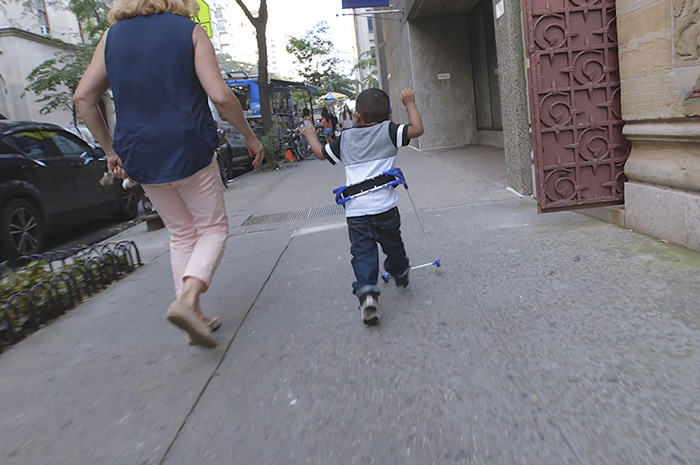Baby Gait
Most humans learn to walk as toddlers, usually without any great danger to themselves. But youngsters who are blind or visually impaired run the risk of tripping over objects they can’t see or walking into trees and walls. As a result, they tend to be overly cautious walkers, which research shows can also delay their learning how to talk, play, and socialize. Since toddlers lack the cognitive skills or dexterity needed to wield a cane, researchers at the City University of New York have invented a wearable alternative.
The “toddler cane” fastens around a child’s waist and has two white shafts that are joined by a U-shaped, ground-level bumper two steps ahead. Grace Ambrose-Zaken of Hunter College, who coordinates master’s programs in rehabilitation teaching and orientation and mobility, got the idea four years ago when it hit her that a device worn like a hoop skirt might work. She eventually partnered with Marom Bikson, a professor of biomedical engineering at City College, to perfect the design and produce prototypes. The two have conducted research that shows the toddler cane may help blind youngsters avoid developmental delays as well as learn to walk more quickly. They hope to conduct more clinical trials and work on reducing manufacturing costs.
Their toddler cane, which generated news reports when announced, is now part of an up-and-running nonprofit called Safe Toddles.

This article originally appeared in the May 2018 issue of ASEE’s Prism magazine and was written by chief correspondent Thomas K. Grose. It was updated in January 2020.
Photo ©Safe Toddles
Filed under: Special Features
Tags: assistive technology, blind, CCNY, Engineering Design, Safe Toddles, toddler cane, visually impaired








